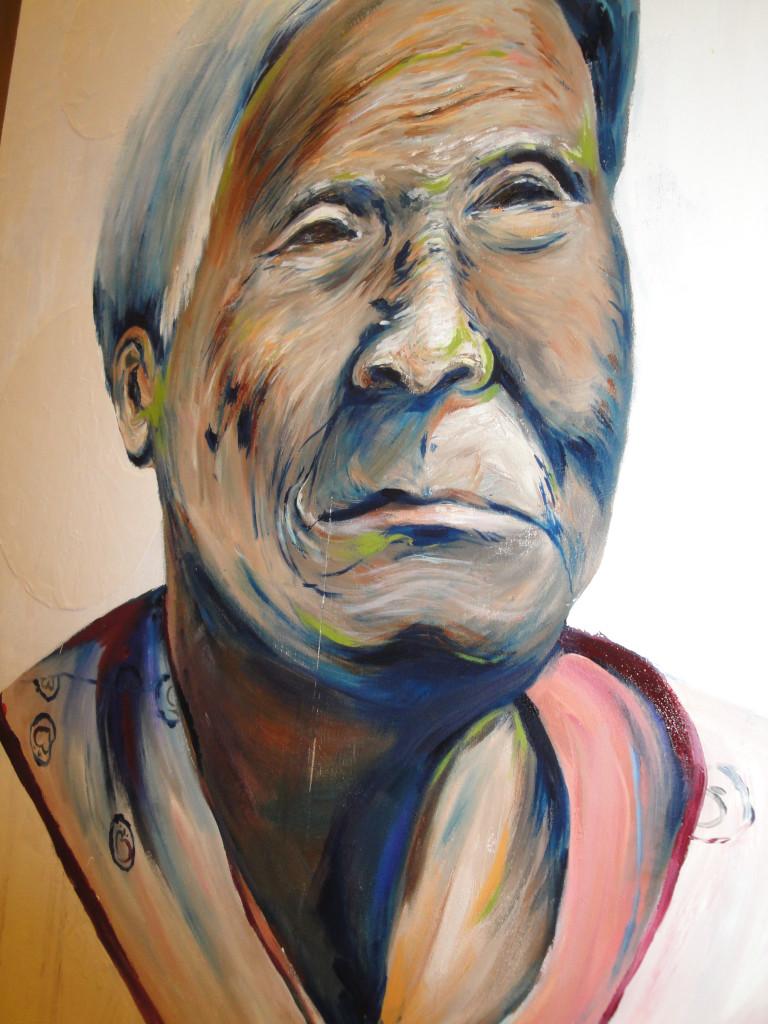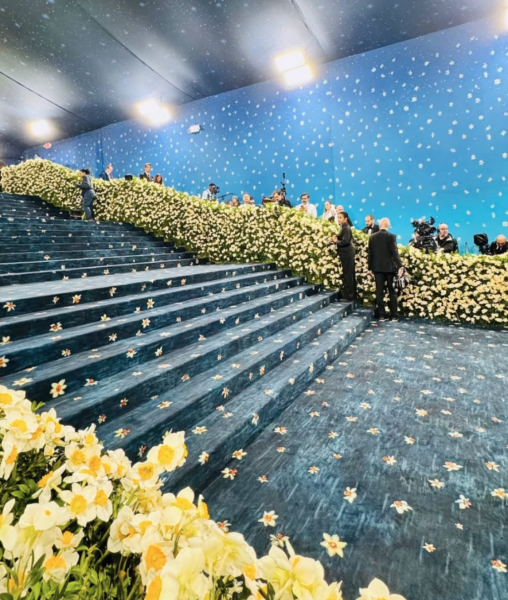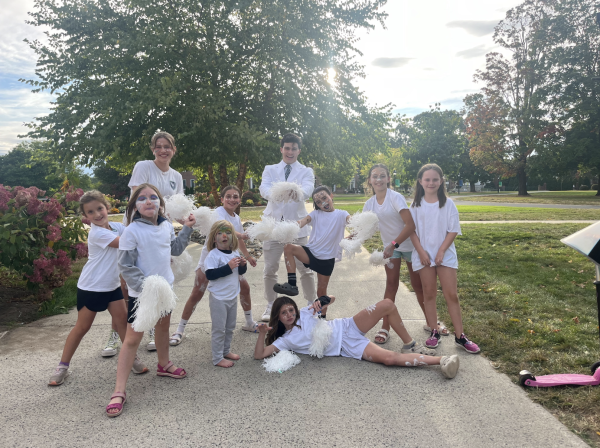Power of Painting
A three foot wide and four and a half foot tall white canvas. Flawless paint brush strokes of colors. Grey, navy blue, olive, white, black and brown. An elderly, dispirited face with a story that no one has heard before. Sophomore Jessie Park expressed the mood of Korean “comfort women” victims through her amazing paintings.
In 1932, after World War II ended, the Japanese military forced over two hundred thousand women and young girls from all over Asia, mostly from Korea, to serve as sex slaves in the Japanese military system. These women were called “comfort women.”
“These women are classified as being a halomony, which means grandmother or an old woman in general. Halomony is often used to refer to the survivors instead of the euphemistic comfort women also known as sex slaves,” says Park. Park painted these halmonies beautifuly.
Most halmonies were abducted by the Japanese military forces from their home countries. Some of them were tricked by the military forces. “It is sad that these kinds of events are occurring not only in Korea; it is occurring currently too, in third world countries and nobody knows about it, and nothing is improving,” says Park.
Many of these women were raped, abused starved, tortured, or even killed after World War II ended. After decades of silence, some of the surviving women have started to speak out. In South Korea, the identities of two-hundred and thirty-seven former comfort women have surfaced. Fifty-nine of these women are still alive today.
“All of these paintings mean something to me,” says Park. “I think the main reason why I am painting these women is to raise awareness of this horrible event in history. I want people to know what happened to these women, and expressing it through art. It so heartbreaking knowing that not a lot of people know about these comfort women.”
These women might never be comfortable in their skin due to their experiences. Their families never treated them the same and many of their lives were changed. “I am painting in honor of them. My paintings are for them,” says Park.
Each of Park’s paintings tell a story. Her paintings give a voice to a story that was covered up for years. Jessie and her mother, Yoon-Sun Cho, who is the minister of Gender Equality and Family in Korea visited The House of Sharing this summer. The House of Sharing is a home for comfort women to live. “I only knew a tiny bit about their history,” said Park. “This information was from what I learned from the internet and history classes I have taken in the past.”
“When I went to The House of Sharing this summer with my mother I met these comfort women,” said Park. “I sat and had conversations with them and I was so sad that as a student in Korea I did not know any sorrows that they had and the heartbreaking moments they have gone through.”
Park met with many of these victims and they all had a different story to tell about their experiences.
“They greeted my mom and me with such warmth,” said Park. “We had conversations about their experiences. A woman who was sitting next to me spoke first about her life when she was young. When she was eighteen years old her friend told her that there were jobs in factories in China and [asked] her to come with her. As her family [had] forbidden her to go, she snuck out in the middle of the night and caught a train with her friend,” said Park.
“However, she was taken, with twenty other girls about the same age, to a “comfort station” in Manchuria. She was forced to live there by the Japanese army as a comfort woman for years and years, but could not escape,” said Park. “Later the base was bombed, and she went back to Korea after wandering in the mountains for a few years by herself.”
“Every painting is different,” says Park. “The largest painting, of the elderly woman, is the one who spoke out for the first time about what happened to her and along with the other comfort women. I used colors on her face to show how she influenced and enlightened other comfort women to speak out. Others comfort women were inspired and shared their story as well.”
One of the four paintings is different from the others. The painting displays a younger female. “I painted their faces abstractly, and to look younger than the other faces, to indicate their identity before they became older,” said Park.
Park believes the voices of these women need to be heard by the world. Park’s artwork demonstrates how something so small as a painting can bring joy to someone else’s life, someone who has been through such horror.








